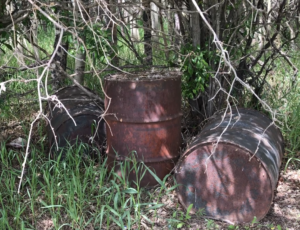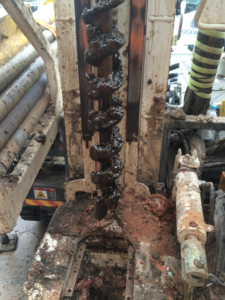As of the 24th November 2019 the “Seven-Part Test Significance” will no longer exist. The new “Five-Part Test” of Significance” will be in place as of 24th of November 2019. The last of the Interim Designated areas will no longer apply and the Biodiversity Conservation Act (2016) will be the legislation applying to all Local Government Areas. It is important for clients to keep this in mind when they are preparing their development applications as there is a limited time to lodge under the old legislation. The last of the Interim Designated Areas are;
- Camden;
- City of Campbelltown;
- City of Penrith;
- City of Fairfield;
- City of Hawkesbury;
- City of LIverpool;
- City of Wollondilly.
The final date for lodgement of all development applications in these Local Government Areas under the old legislation will be the 24th of November 2019.
As fully qualified and certified BAM Assessors we can assist you with your next project. Please give us a call on 1300 302 507 to discuss your project as careful planning is important early on in the project plan.
At Anderson Environmental we are often asked by our clients to provide advice early on in the development assessment process. Often this commences even before a client decides to purchase a property and it is generally the larger and more experienced property developers who know the value of getting a thorough Due Diligence Pre-Purchase Inspection undertaken. Often we are advising client’s on properties in the millions and have recently advised a client on a 10 million dollar property before they decided to purchase.
So what is the role of a Pre-Purchase Due Diligence Inspection for potential contamination ?
Most often a Due Diligence Pre-Purchase Inspection involves a combination of reviews of existing records from both the site and its surrounds combined with a walk over site inspection. For the assessment of contamination risk in accordance with State Environmental Planning Policy (SEPP 55) and to manage potential risks when purchasing a property it is important to consider the history of a site before purchase. Many sites will not have a known history however this does not result in no risk of contamination. As such it it important to utilise experienced professionals to undertake a site visit and background searches as part of a formal Preliminary Site Investigation (PSI). Neighbouring sites also have to be considered as contamination can migrate from neighbouring sites as above ground, through the soil or from groundwater contamination. Generally the assessment area should be an area of 300 metres from the property boundary in all directions. This is due to the potential for contamination to migrate off adjoining sites which have been used for potentially contaminating activities or underground by way of the groundwater table.
Often due to the potential risk from contamination it is important to undertake sampling of the soil or groundwater prior to purchase for high risk sites.
Please give us a call before completing your next purchase for your Due Diligence Contamination Risk Assessment.
Recent revelations regarding the Sugar Cube apartment development at Erskineville in Sydney regarding toxic contamination which may not have been correctly remediated by the developer have caused major concerns regarding contaminated land and real estate. In this case the City of Sydney is refusing to let apartment owners move in due to concerns the land has not been remediated fully to remove the contamination present. Unfortunately properties and land in the older areas of many cities come with long histories of industrial, manufacturing or other activities such as dry cleaners and petrol stations which often results in quite serious land contamination. These potentially contaminating activities can result in soil and groundwater contamination. In this case the apartments have been built at the old Ashmore industrial estate In Erskineville. Such areas, where former industrial activities have been undertaken often result in high levels of contamination. In this case it has been reported that the former manufacturing has left behind heavy metals, hydrocarbons, asbestos along with contaminated groundwater. The City of Sydney is requesting further testing to be undertaken and in this case there is potential for further remedial actions to be required.
Many people are unaware of the risks from contamination. Botany Sands Aquifer, which occurs under much of Sydney, and which once supplied some of Sydneys drinking water in it early days is now unsuitable for drinking due to past contaminating activities. The aquifer has been contaminated with chlorinated hydrocarbons and other solvents, petroleum hydrocarbons including petrol and diesel, and some heavy metals such as chromium, nickel, lead, and arsenic. The source of this contamination came from historical industries before there were any environmental controls. Contamination in this aquifer came from tanneries, metal platers, service stations and fuel depots, landfills, dry cleaners and wool scourers. The major risks to developers redeveloping former industrial lands can be from both soil and groundwater contamination. In many areas the former use may have contaminated the soil however even sites with no former obvious potentially contaminating activities can have contamination present. This contamination has often has been brought to these sites as “fill” historically to level the ground for concrete slabs and foundations. Furnace Slag along with a range of materials such as asbestos are often found in such areas due to the presence of historical fill. Contamination can also migrate from adjoining sites through soil and groundwater.
In New South Wales, State Environmental Planning Policy 55, SEPP55 along with the NSW EPA guidelines for contaminated lands governs contaminated sites and assessments. Due Diligence in relation to Real Estate purchasing is prudent even if there are no historical signs of contamination. Councils upon submission of a Development Application generally request a SEPP55 Preliminary Site Investigation (also called a Stage 1 or Phase 1 Environmental Site Assessment). This can be the first time and landowner even thinks of potential contamination on their property. As a find of contamination can result in very expensive remediation it is better to undertake a SEPP 55 Preliminary Site Investigation before purchase of the property. Such assessments have been common practice in North America for at least the past 30 years and are becoming more common in Australia. As obtaining a “clean” contamination report is linked to obtaining finance overseas they are very commonplace much like the requirement for a building inspection.
In the future they will become more commonplace in Australia.
If you are requiring a Due Diligence Contamination Assessment or a SEPP 55 Preliminary Site Investigation or a Detailed Site Investigation please give us a call on 1300 302 507.
When undertaking SEPP 55 Contamination Assessments you never know exactly what you may find when you attend a site. Many of our long term clients such as Land Developers understand the process and risks very well however to clients not familiar with the process it can be somewhat confusing why their Council is requesting a report for Contamination for their Development Application.
The reason for a request from council for a SEPP 55 contamination assessment, also called a Preliminary Site Investigation or Stage 1 Contamination Assessment is to determine if the site has the potential to be Contaminated.
Contamination can be as a result of past land use practices such as; orchards, mechanical workshops, petrol stations, market gardens, illegal dumping, certain manufacturing, dry cleaners and even home based businesses to name but a few. The contamination source can be from undertaking a Potentially Contaminating Activity on the site by a previous owner decades in the past and there may be no obvious evidence of contamination being present. Sometimes a source of contamination can be from adjoining sites whereby their activities may contaminate their neighbours.
The reason Councils often request such assessments be undertaken is to ensure that a site is safe for its intended use. The most obvious example to provide here is a proposed Child Care Centre. As young children will often come into contact with soil it is important to ensure there is no soil contamination from items such as heavy metals, asbestos, pesticides or other contaminants.
Below is an example of an obvious item of potential concern being dumped drums and other associated debris from machinery servicing. Activities such as these can result in contamination of surrounding soil. When purchasing a property or developing or changing a properties use it is important to consider former uses which may have resulted in contamination to the soil or ground water.

A more extreme example is provided below of a bore hole near to a workshop at an older Petrol Station where we recently undertook a Stage 2 Detailed Site Investigation. This shows heavy oil contamination within 1 metre of the surface. Whilst it is not unusual to find contamination at former Service Station Sites the level of contamination encountered was unusual.

By requesting a Contamination Report council is aiming to identify any risks early to protect people and property.
Hopefully this provides some background and understanding as to why Council may have requested a SEPP55 report as part of your development application.
Please give us a call to discuss your specific application and order your assessment.



